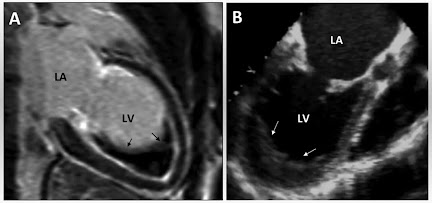Gangrene
Massive cell death of a part of living tissue superadded putrefaction due to saprophytic bacteria.
Classification
1. Dry gangrene
2. Wet or moist gangrene
3. Gas gangrene
1. Dry Gangrene : This type of gangrene is seen in that part of the body there is lack of water quantity like - hands and feet.
Causes :
- Gradual vascular obstruction as seen in senile gangrene, diabetic gangrene.
- Sudden vascular obstruction as seen in thrombosis, embolism and ligation.
- Extreme cold (frost bite).
- Strong acid, coagulate the fluid of the tissue so produce dry gangrene while strong alkalies liquefies the tissue so produce the moist gangrene.
Features of dry gangrene :
- This type of gangrene is seen in the body there is lack of water like hands and feet.
- This type of gangrene generally starts in distal part (great toe) and spread toward the heart.
- Growth rate of this type gangrene is slow.
- The affected part is initially waxy then becomes dry and shrunken then it become yellowish blue then finally dark blackish due to pigmentary changes ( The stagnant blood RBCs are starts to breakdown and Hb release their iron which combines with hydrogen sulfide that produced by the bacteria and form iron sulfide, which stains the tissue black).
- There is found a red line between healthy and dead tissues which is called 'line of demarcation' due to inflammatory reactions, noxious substances produce by necrotic cells.
- There are necrotic features are also present.
- Senile Gangrene : This type of gangrene is seen in old age people due to arteriosclerosis but finally thrombosis is responsible for the occlusion of artery.
- Diabetic Gangrene : This type of gangrene is due to atheromatous plague in the artery. bacterial growth is favored due to high percent of sugar in red tissue.
2. Moist Gangrene : This type of gangrene is seen in the body where, there is present abundant quantity of water like oral cavity, intestine, vulva etc.
Causes : This type of gangrene is heavy develops due to -
- Blockage of venous and arterial flow as seen in strangulated hernia, intussusception, volvulus etc.
- Burn also produce moist gangrene.
- Bed-sore is an example of pressure gangrene may cause occlusion of vessels followed by necrosis and gangrene. It is seen in old age, chronic illness and injury of spinal cord.
Features of moist gangrene :
- This type of gangrene is seen at the area of abundant water.
- The affected part is cold and pulseless.
- The color of affected part is bluish to green and black due iron sulfide.
- There is absent line of demarcation.
- The rate of spread is rapid.
- Growth of bacteria also rapid due to excessive fluid concentration. Toxins of bacteria are absorbed and produce severe toxaemia and even death.
3. Gas or Infective Gangrene : This type of gangrene is caused by the infection of anaerobic bacteria it is seen in wounds.
Causes : This type of gangrene is produced by following clostridia species -
A). Saccharolytics
- Clostridium welchii (80%)
- Clostridium septicum
B). Proteolytics
Pathogenesis :
- The infection of anaerobic bacteria, laceration and crush injury is essential. The organism don't grow with healthy tissue.
- Haemorrhage and blood clot help the infection specially by calcium supply.
- Contaminated soil, supplies silica and calcium to the wounds is also help in infection.
- Dirty splits and fragments causes laceration and contamination of wounds.
- Circulatory obstruction caused by the occlusion or damage of the artery. pressure on vessels by tourniquet or tight bandage are contributory factors.
- Inadequate drainage and exudate and favours the spread of infection.
Infection of damage tissue by Streptococci, E. Coli, Staphylococci etc. produce anaerobic atmosphere by loosing oxygen of the tissue that's by giving the chance when anaerobic bacteria to grow.
The saccharolytic group of organism breaks the glycogen into carbon dioxide, hydrogen and lactic acid. Excessive production of lactic acid stop the growth of saccharolytic organism at the same time proteolytic group of organism is starts to growth and liberate proteinase and forms the amino acid in the tissue. This amino acid breakdown into ammonia which neutralized lactic acid. At the same way the cycle repeat again and again.
The liberation of toxins in blood causing increase blood pressure. This toxins also damage the endocardium causing sudden heart failure. The gas gangrene producing bacteria produce enzymes hyaluronidase, proteinase and collagenase which helps in spread of lesion.
Morphological features - The affected part is swollen and crepitant on palpation due to accumulation of gas in the tissue. The color of skin is affected part is yellowish green or black. On microscopic examination the causative organism are seen, the muscle fibers lose striation hyalinized and disintegrated.









No comments:
Post a Comment
Please do not enter any spam link in the comment box